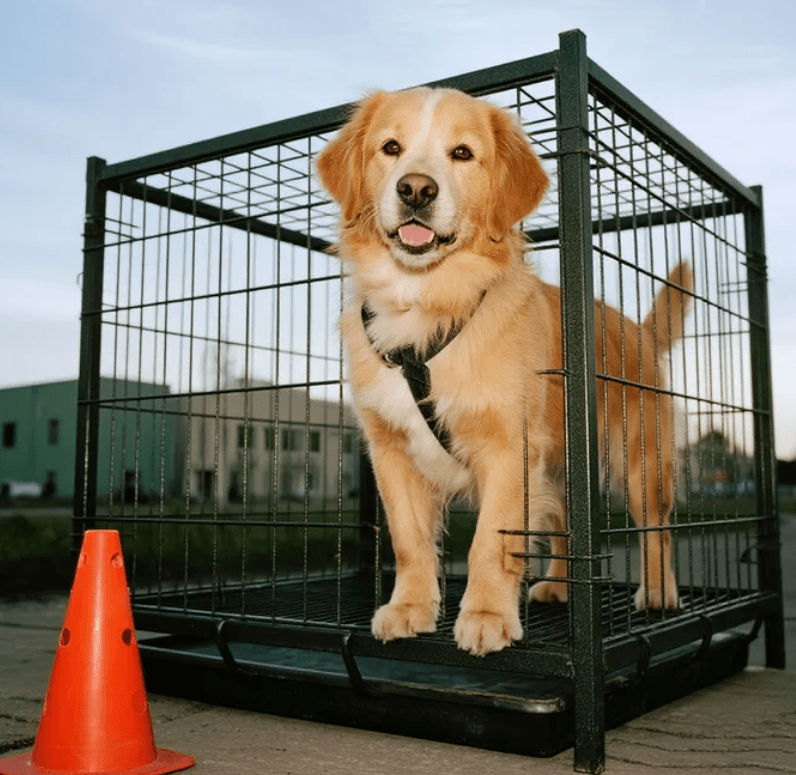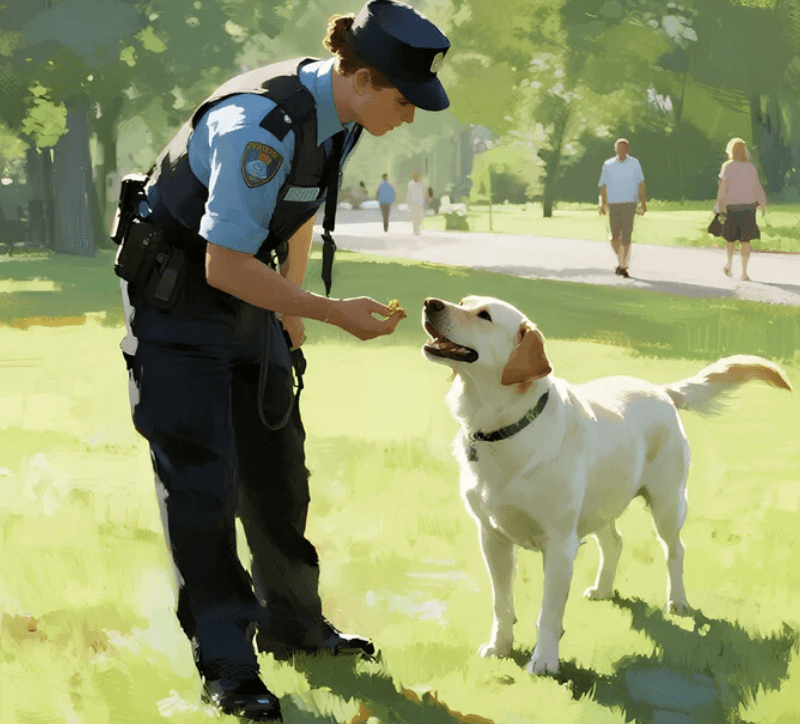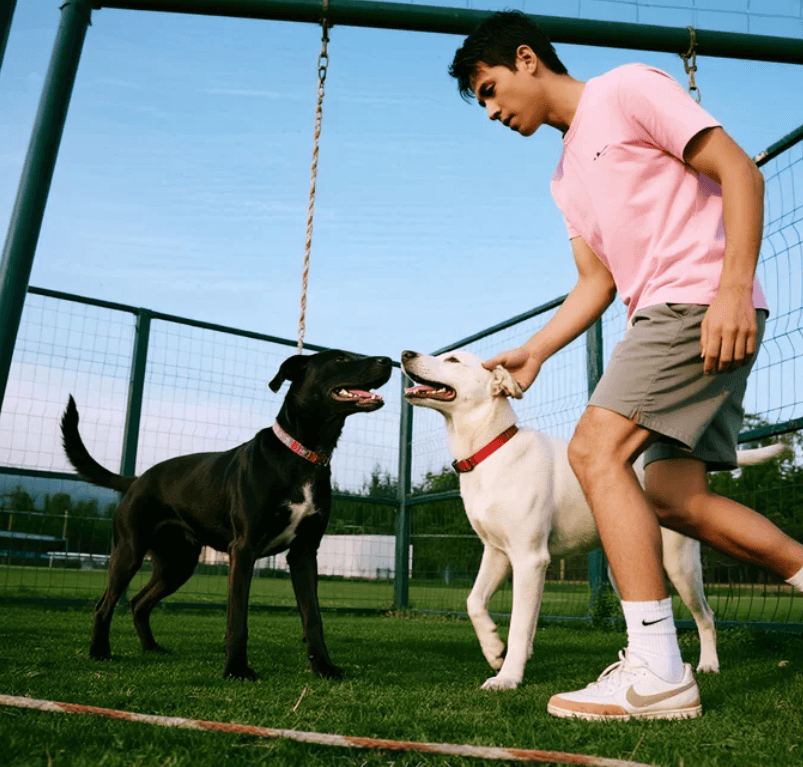2025 Older Dog Crate Training Tips: How to Crate Train an Older Dog

Why Crate Training Matters for Older Dogs
Crate training an older dog may sound challenging, especially if they’ve spent years without one. However, it’s not only possible, it’s often beneficial. Whether your older dog is newly adopted, showing signs of anxiety, or recovering from a medical procedure, crate training can provide structure, comfort, and safety.
In this guide, we’ll walk through how to crate train an older dog using a gentle, step-by-step approach tailored specifically to senior and adult canines.
Can You Crate Train an Older Dog?
The short answer is: yes! While younger dogs tend to adapt faster, older dogs are perfectly capable of learning new routines, including crate training.
However, they often require more patience, consistency, and compassion. Understanding your dog’s age-related needs is the key to successful training.
Why Crate Training Older Dogs Is Different from Puppies
Unlike puppies, older dogs have deeply ingrained habits and may already have emotional associations with confined spaces. Some common challenges include:
- Resistance to change: Older dogs may be hesitant about new routines or spaces.
- Health issues: Arthritis, poor eyesight, or bladder problems can affect crate training.
- Past trauma: Rescue or shelter dogs may associate crates with negative experiences.
Crate training in this context must be built around trust, comfort, and respect for the dog’s physical limitations.
Benefits of Crate Training Older Dogs
Crate training can greatly improve an older dog’s quality of life when done thoughtfully. Benefits include:
- Creates a safe space: A quiet retreat where your dog feels secure, especially in busy households.
- Reduces anxiety: Crates help calm dogs who suffer from separation anxiety or environmental stress.
- Aids recovery: If your senior dog is recovering from surgery or injury, a crate helps restrict movement and prevent re-injury.
- Supports housebreaking: Some older dogs need help relearning potty routines due to new environments or medical conditions.
Step 1: Choose the Right Crate for an Older Dog
Older dogs often have physical limitations that must be considered when selecting a crate:
- Size: Ensure the crate is large enough for the dog to stand, turn, and lie comfortably, but not excessively large.
- Low threshold: Choose a crate with a low step-in height to ease joint strain, especially for dogs with arthritis.
- Soft bedding: Use orthopedic or memory foam beds inside the crate to support aging joints.
- Accessibility: Position the crate in a warm, draft-free area with low noise and gentle lighting.
Wire crates with double doors or front access are often the best choice for seniors due to their visibility and airflow.
Step 2: Introduce the Crate Slowly and Positively
Older dogs need time to adjust to new things. Begin with slow, no-pressure exposure to the crate:
- Leave the crate door open and place soft bedding inside.
- Put favorite treats, toys, or chew bones near or inside the crate to encourage exploration.
- Feed your dog meals near the crate, then slowly move the bowl inside over several days.
- Use praise and calm encouragement when your dog approaches or steps into the crate.
Never force the dog into the crate. Let them make the first move, even if it's just sniffing the door.
Step 3: Practice Short Sessions with the Door Closed
Once your dog is comfortable entering the crate, begin practicing short sessions with the door closed:
- Ask your dog to enter using a cue like “crate” or “bed.”
- Close the door gently and stay nearby for 5–10 minutes.
- Open the door calmly after the time is up — avoid dramatic entrances or exits.
- Gradually increase the time while staying within view, then try stepping out of the room.
If your older dog becomes anxious, reduce the session time and work back up gradually. Progress at your dog's pace.
Step 4: Build Routine and Comfort Around Crate Time
Older dogs love routine. Once they associate the crate with comfort and predictability, they’re more likely to accept it as a safe zone.
Ways to reinforce crate comfort:
- Crate during quiet moments: Encourage naps in the crate during the day with soft music or a blanket that smells like you.
- Use the crate at night: Keep the crate near your bed if possible, so your dog doesn't feel isolated.
- Offer long-lasting chews: Give them a special treat in the crate to build positive feelings.
- Set a potty routine: Ensure regular breaks, especially if your dog has bladder sensitivity.
Addressing Crate Anxiety in Older Dogs
Some senior dogs may show signs of stress during training. Look out for:
- Whining, pacing, or barking in the crate
- Refusing to enter or avoiding the crate entirely
- Drooling or shaking when confined
Solutions:
- Go back a step in training and progress more slowly.
- Use calming aids like pheromone sprays or anxiety wraps.
- Place a favorite unwashed T-shirt or soft toy in the crate.
- Ensure the crate isn’t too hot, cold, or noisy.
If anxiety persists, consult a vet or certified dog behaviorist.
Crate Training an Older Rescue or Shelter Dog
Many adopted older dogs have unknown pasts. Their response to crate training may be shaped by trauma or neglect. For these dogs:
- Be especially patient and kind.
- Use high-value treats to create positive associations.
- Do not close the crate door for the first week or two — allow complete freedom in and out.
- Observe body language: tail tucking, panting, or wide eyes are signs to slow down.
It may take weeks or months, but even fearful dogs can learn to feel safe in a crate with gentle guidance.
Medical Considerations for Senior Dogs in Crates
If your dog has age-related conditions, crate usage should be adapted accordingly:
- Arthritis: Use padded bedding and avoid sudden crate confinement after exercise.
- Incontinence: Provide more frequent potty breaks and use washable crate liners.
- Vision or hearing loss: Keep the crate layout consistent to prevent disorientation.
- Medications: Schedule crate sessions around medicine or mealtimes to maintain comfort.
When in doubt, ask your veterinarian about using a crate during illness or recovery.
How Long Can an Older Dog Be Crated?
Older dogs often need more frequent breaks. General guidelines include:
- Daytime: No longer than 3–4 hours without a potty break, especially for dogs with medical issues.
- Nighttime: Up to 6–8 hours if your dog can sleep through without needing to go out.
Never use the crate as a way to leave a dog unattended for extended periods. The goal is comfort, not confinement.
When Crate Training Isn’t the Best Option
While most older dogs can adapt, some simply won’t tolerate a crate. In that case, consider alternatives:
- Exercise pens: Provide more room while still offering boundaries.
- Gated-off rooms: Choose a quiet, dog-proof area with bedding and toys.
- Calming furniture covers: If your dog prefers couches, make them accessible and safe.
Don’t force crate training if it clearly causes distress. Listen to your dog’s needs and work around them.
FAQs: Crate Training an Older Dog
Q: Is it too late to crate train my 10-year-old dog?
A: No! It’s never too late. Older dogs can be crate trained with the right techniques and patience.
Q: How do I know if my older dog is comfortable in the crate?
A: Signs of comfort include willingly entering the crate, lying down to rest, and sleeping peacefully inside.
Q: What if my senior dog has accidents in the crate?
A: Check for medical issues first. You may also need to adjust the potty schedule or use absorbent bedding.
Q: Can I crate train my older dog if they’ve never used a crate before?
A: Absolutely. Just take things slowly and be extra supportive through the process.
Conclusion: Crate Training an Older Dog Is a Gentle Journey
Crate training an older dog isn’t about control, it’s about care. With time, compassion, and the right environment, your senior pup can come to see the crate as a peaceful retreat. Whether your goal is housebreaking, recovery, or simply offering them a quiet space, your efforts will pay off in the form of a more relaxed, confident, and happy dog.
 Related Articles
Related Articles





